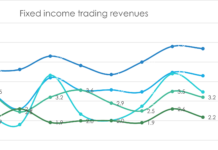The Australian Stock Exchange (ASX) has pulled its project to replace its existing settlement system, CHESS, with a blockchain-based settlement system.
The project, which has run for seven years, has cost the exchange group AU$245-255 million, (US$170 million) via a ‘de-recognition charge’. Other market participants which have spent resource engaging with the project and developing connectivity or software will have lost additional funds.
The Australian Securities & Investments Commission (ASIC) said in a statement, “Industry has incurred significant cost to date on the CHESS Replacement program and will need to continue to invest and commit resources until an alternate solution is rolled out. The regulators expect that any write-down of work and investment capitalised by ASX be borne fully by ASX Limited.”
The system, CHESS+, was being developed with Digital Asset, which described it as “a full production replacement that meets the rigorous demands of systemically important infrastructure regulations without disrupting a $1 trillion market.”
Consultancy Accenture found four core issues with the project. Firstly, it noted, “Distributed systems introduces higher latency. In the current architecture, the latency is further increased due to the round-trip data flow of submitting a transaction to the client node through to writing the data to the ledger and distributing back to the client nodes and the CHESS Replacement Application. This design preserves optionality for providing a node to ASX’s clients in the future. However, the latency comes at a cost and some workflows needing serial processing may run into challenges meeting the non-functional requirements.”
It also noted that the architecture design supports concurrency which helps allow for scale which is required to meet ASXs non-functional requirements, however, “concurrent processing can cause contention when processing multiple in-flight transactions targeting the same dataset e.g., holdings targeting the same broker, security, and HIN. To remediate this issue, batching/grouping is introduced; however, grouping transactions together does not remove the contention problem forcing serialised processing for some workflows.”
Although batch processing was introduced to solve for concurrency, to achieve scale, and to meet the non-functional requirements with the contention issues noted above, it “is limited by constraints imposed that need to be configured and tested further.”
Batching of transactions to process could be constrained by practical limits in Digital Asset Modeling Language (Daml) Ledger API, the size of a Daml object on ledger, and VMware Blockchain (VMBC) i.e. the total size of a transaction message. The report notes “These limits could be a hindrance to extensibility.”
ASX CEO, Helen Lofthouse, said, “The independent report coupled with our own assessment work, confirms a number of significant challenges associated with aspects of the CHESS replacement project … the derecognition charge reflects the uncertain ty of the future if the current solution design. It does not prevent us from using parts of what we have already built if we determine there are adjustments we could make … our priority is continuing to maintain the stability of the existing CHESS system.”
ASIC chair Joe Longo said, ‘ASX has rightly recognised that pausing the program while it revisits the technology design for the CHESS replacement was a necessary decision. It opens the way for the resolution of the issues identified in the independent report and ASX securing the necessary capabilities to deliver the replacement. The independent report has found significant gaps and deficiencies in ASX’s program delivery capabilities and that there are significant challenges in the technology design. That these findings can be made at this late stage of a critical replacement program is altogether unsatisfactory.’
He continued, ‘ASX has failed to demonstrate appropriate control of the program to date, and this has undermined legitimate expectations that the ASX can deliver a world-class, contemporary financial market infrastructure. The regulators are closely monitoring ASX’s ongoing management of clearing and settlement under its licences. Our immediate focus is to ensure current CHESS continues to provide the level of service, reliability and resilience that is required. The regulators will bring to bear the full range of regulatory options to ensure this is the case.’
Reserve Bank of Australia governor Philip Lowe said, ‘The announcement by ASX after many years of investment by both ASX and industry is very disappointing. ASX needs to prioritise developing a new plan to deliver safe and reliable clearing and settlement infrastructure. The Reserve Bank of Australia also expects ASX to maintain the current CHESS so that it continues to operate reliably and support confidence in Australia’s cash equity markets.’
©Markets Media Europe 2025













